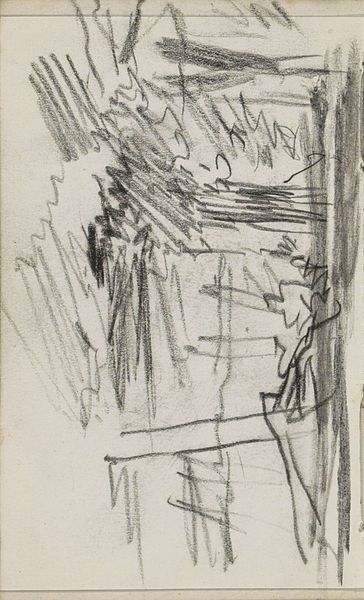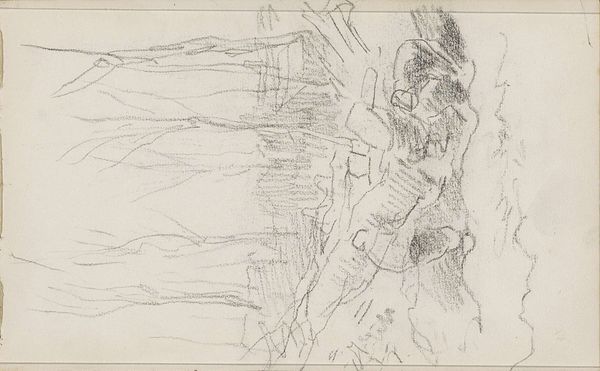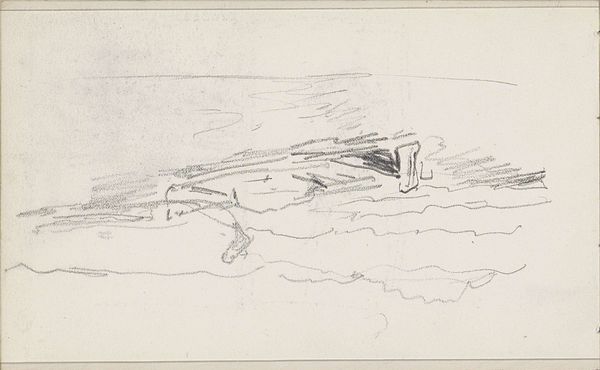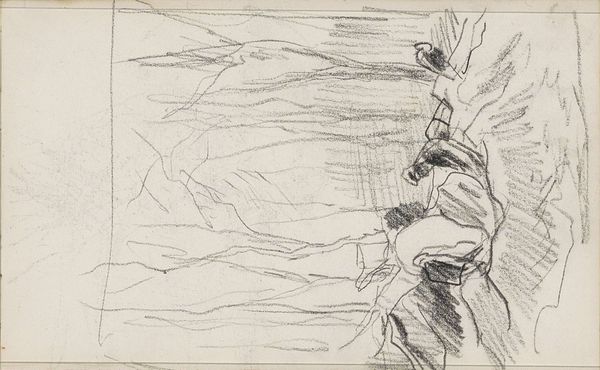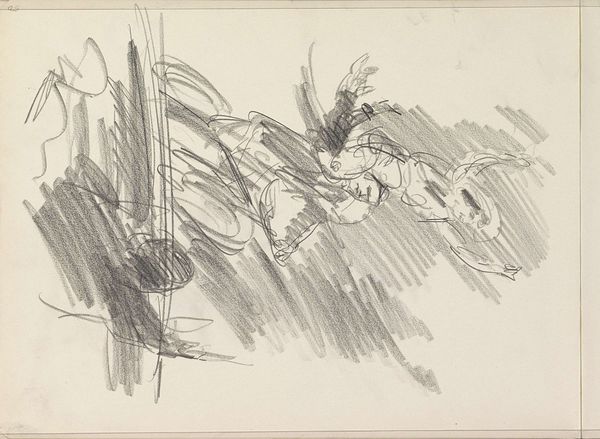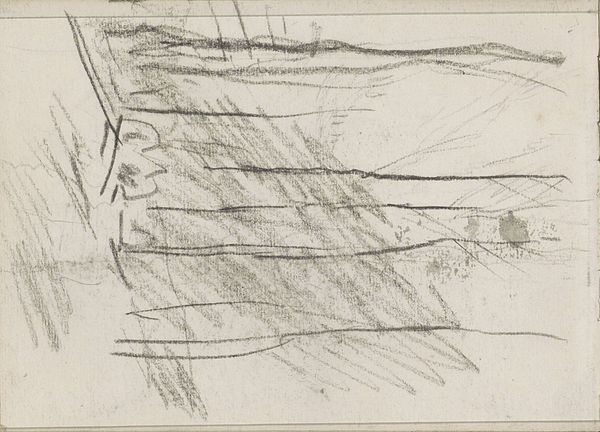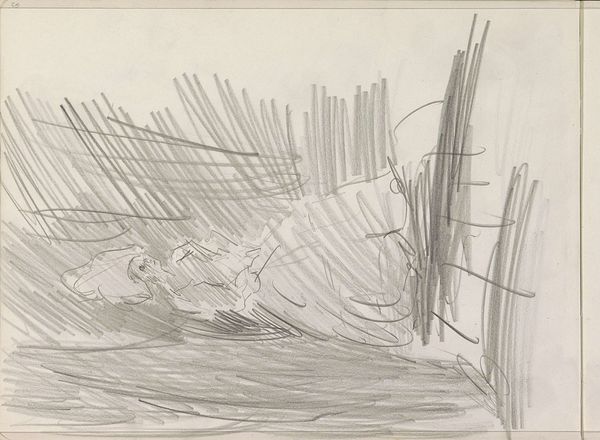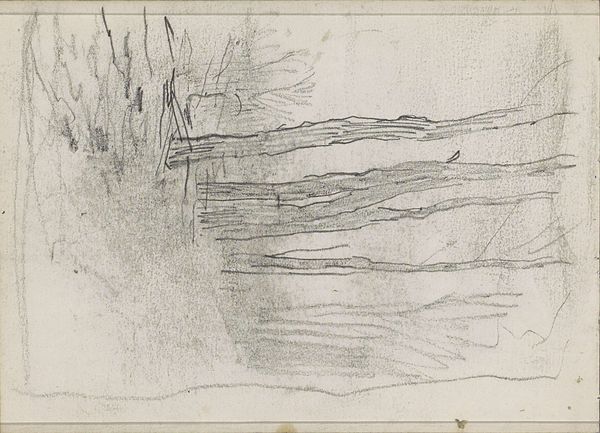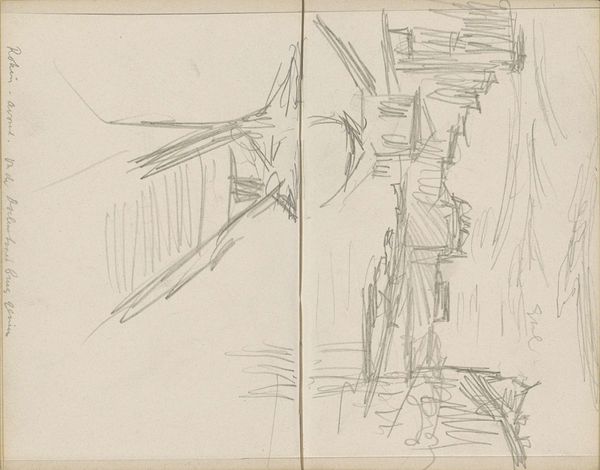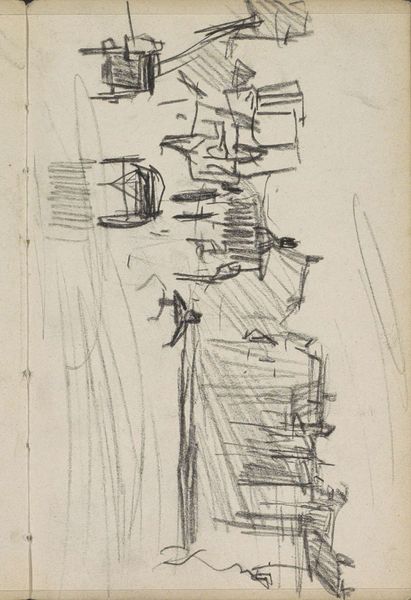
drawing, pencil
#
drawing
#
landscape
#
sketchwork
#
pencil
#
sketchbook drawing
Copyright: Rijks Museum: Open Domain
Curator: Alexander Shilling created this pencil drawing, "Figuren op een jaagpad," in 1908. Looking at it, what's your initial impression? Editor: It feels like a fleeting moment captured. The swift, almost frantic, lines suggest a scene glimpsed from a moving train. There's a rawness and immediacy that’s very appealing. Curator: Indeed. The work comes from a pivotal period in European history. It reflects broader cultural anxieties about modernity. One has to consider the Industrial Revolution and the rapid urbanization of the era, influencing artistic perspectives, towards the relationship of landscape and the society within. Editor: I find it curious that it only captures only the slightest traces of society itself. Those shadowy, almost indistinct figures in the middle, they are hard to decipher. The overwhelming element is the depiction of landscape. One can almost taste the raw dampness in the air. Do you think this is supposed to function as a statement on industrial encroachment? Curator: The path itself, the “jaagpad”, or towpath, was constructed and is evidence of it, it’s literally built into the land. So I feel it is important to address the complicated relationship society had with industry. Shilling’s choice to focus on it rather than exclude its existence altogether shows an intersectional dynamic within it. One may observe and consider Shilling’s choices. Editor: I see your point. This piece reminds us of the subjective way any reality, be it pastoral or otherwise, is portrayed, isn’t necessarily objective. Perhaps the sketchbook format also reinforces this feeling, portraying it as a private, personal experience, shaped by memory and mood rather than pure observation. Curator: It certainly makes me reconsider my approach and what it means to display the work, a peek at a memory of Shilling’s. It makes me wonder, are we truly observers if we were to superimpose our expectations onto a place and society that may never have been ours to begin with? Editor: Absolutely. And by framing it as a subjective rendering, rather than objective, Shilling challenges us to bring our own experiences to the table, doesn't it? It invites a dialogue between his experience and ours. Curator: Yes, exactly. And looking at this sketch today, over a century later, in a time of renewed anxieties, the message remains poignantly relevant, calling upon viewers to engage actively with his perspective and with the scene. Editor: I completely agree. It really speaks volumes about how a landscape carries layered historical significance.
Comments
No comments
Be the first to comment and join the conversation on the ultimate creative platform.
